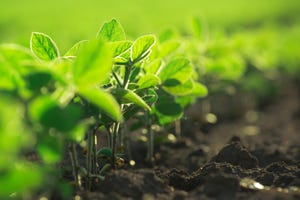Manure sterilization tested at hog farm

MAGNEGAS Corp., a technology company with a patented process that converts liquid waste into a hydrogen-based fuel, recently announced that it has completed construction and initial testing of its Venturi sterilization system at a major hog farm in Indiana.
The testing showed that the MagneGas system had achieved full sterilization of the processed manure.
Prior to the launch, it was anticipated that the sterilization system would process hog manure into a high-quality, low-odor fertilizer that the company believed could be safely used on crops. Additionally, the system is expected to produce a byproduct fuel that could be co-fired with propane or natural gas to reduce other fuel needs.
Once construction was completed, system testing occurred over the course of several weeks, with several-thousand gallons of manure processed through the MagneGas system. An independent laboratory provided results under various parameters, and the results showed that the MagneGas system achieved full sterilization of Escherichia coli and fecal coliform bacteria. These were the specific bacteria types the farm requested to be tested during the process, and these results will allow the project collaboration to continue.
"I am pleased with these initial test results," MagneGas chief executive officer Ermanno Santilli said. "MagneGas was confident that full sterilization would be achieved."
Santilli explained that the company is currently working with the farm through the next phase of advanced testing, product development and necessary modification.
"We look forward to collaborating with this influential stakeholder in the agricultural industry in the coming months as the final system is developed," he said.
The next phase of advanced testing will use higher liquid volumes and different operating conditions. The company intends to work in collaboration with the farm during the coming months to optimize the final MagneGas system that will meet the commercial requirements for deployment.
Following a successful demonstration, the Indiana farm owner indicated to MagneGas that he plans to purchase the system to use for his manure sterilization needs and would partner with MagneGas to launch the new systems for use in the worldwide agriculture industry.
MagneGas and its partners have demonstrated that a wide range of liquid wastes can be sterilized, such as blood, sewage, manures, leachates and a variety of sludges.
As recently as July 2014, MagneGas confirmed that it meets Environmental Protection Agency standard 503.32 by sterilizing hog manure and reducing coliform bacteria counts to "undetectable levels." The company has said it believes that meeting this rule transforms Class B manure into Class A manure suitable for land application and, in some cases, fertilization.
SowBridge sessions
The first of 12 monthly SowBridge 2015 distance education sessions starts Feb. 4, and organizers are encouraging quick signups so subscribers will have the materials they need in time for the first session.
The programs, designed for anyone who is managing sows, boars or pig litters, include information on swine identification, porcine epidemic diarrhea virus, temperature management of sows and piglets, on-farm necropsies, fostering litters, feeding the lactating and weaning sow and more.
Produced through a collaboration of 11 land-grant universities, including Kansas State University, SowBridge offers the latest information on sows, boars and litters. Presentations are delivered electronically through 12 Wednesday sessions.
SowBridge combines electronic information viewed on a computer with live presentations by experts via phone, so no internet access is necessary at the time of the presentation.
About a week before each session, subscribers receive a web link with the specific presentation and additional information provided by the presenter. Participants call in for the audio portion of each session and follow along with the 45-minute presentation on their computer.
Participants can take part where it works best for them — at home, in an office or in the swine unit, said Joel DeRouchey, livestock specialist with Kansas State University Research & Extension. Audio files from each session also can be downloaded for later use.
The fee to participate is $250 for the full year. Additional subscriptions from the same business are available at half the cost.
An informational brochure with subscription information is available at www.ksuswine.org under Upcoming Events.
PIN tag deadline
As of Jan. 1, U.S. pork producers are now required to identify all breeding stock delivered for harvest. Prior to transport to a harvest facility, producers must apply an official premises identification number (PIN) tag to their animals.
The U.S. Department of Agriculture-approved PIN tags replace the back tags that previously were applied to breeding animals at the harvest facility. Older tags did not include a premises registration number and oftentimes fell off of the animals at the harvest facility, creating some delays in sample traceback.
According to Dr. Patrick Webb, director of swine health for the pork checkoff, "The new PIN tags will enhance pre-harvest traceability and national disease surveillance."
Most major U.S. packers harvesting breeding stock have shown support for the Swine Identification Plan and made PIN tags a condition for sale this year. Johnsonville, Hillshire Brands, Bob Evans Farms, Wampler's Farm Sausage, Calihan Pork Processors, Pine Ridge Farms, Pioneer Packing Co., Abbyland Pork Pack and Pork Kin Packing now all require the PIN tag for harvest.
USDA and swine industry officials, including Webb, agree that individual identification is essential for targeted surveillance, rapid response and traceback for diseases such as pseudorabies or foot and mouth disease.
"If there is a disease issue, PIN tags could expedite the investigation, identify the site and aid officials in quickly containing the outbreak to help limit potential damage for the producer and the rest of the industry," Webb said. "The official PIN tags demonstrate to our trading partners that we have a valid pre-harvest traceability system. With more than 25% of U.S. pork production going to foreign buyers, that assurance helps keep export markets viable."
Besides their use for data collection at the plant, the tags are also expected to enhance the Pork Quality Assurance programs, according to Webb. The PIN tags can be used to track animal movements and necessary medical treatments.
Producers across the country have asked many questions about application of the tags and on-farm recordkeeping requirements.
Some producers have wondered whether animals that were originally intended for breeding and later moved outside the breeding system need a PIN tag.
USDA defines breeding swine as sexually intact swine over six months of age. The pork checkoff recommends that producers talk to buyers when these types of animals are going to be marketed. Additionally, if there is a chance that the animal will be delivered to a sow/boar plant, producers should apply a PIN tag even if the animal was not used for breeding purposes.
The pork checkoff said producers should contact their buyers for more information about specific plant requirements and can also access information about the program at www.pork.org.
Volume:87 Issue:04
About the Author(s)
You May Also Like



